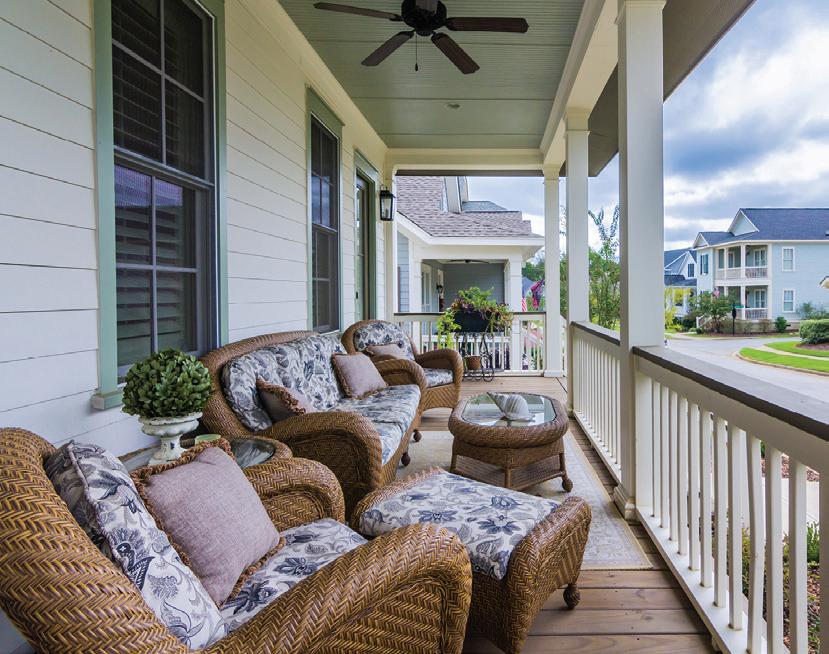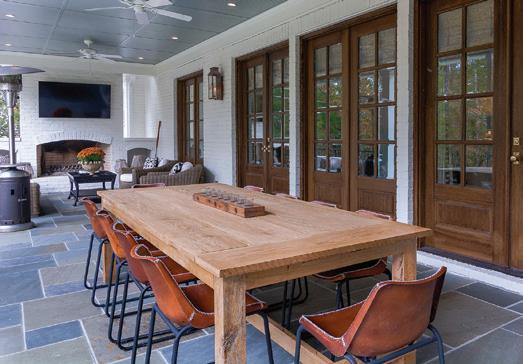
2 minute read
Porch Living

BLYTHE BUILDING COMPANY — ARCHITECT: ALLISON RAMSEY
Porch Living
Advertisement
In the days before air conditioning people congregated in the breezy air of their front porch, sweet tea in hand, refugees from the searing heat of their indoor space. Rocking chairs were the lounge chairs of their day and many a young love had their first kiss in a porch swing, just out of family earshot of the open house windows.
Then came electricity and air conditioning, which cools air and lowers humidity. Houses were spaced further apart for privacy so there was less connection to next door neighbors. Front porches became a greeting space for entering the house and back porches took over the connection to the outdoors, giving us access to the pool, the grill and the patio.
“It’s more of an architectural enhancement to the façade of a house,” says Jim Evatt, owner of Palmetto Construction and Renovations. “We’re not asked to build lot of front porches.”
The word porch derives from the Latin “porticus,” the columned entry to a temple. Porches were absent in European architectural traditions but were added in the U.S., particularly in warmer climates. Designer Andrew Jackson Downing popularized porches in an 1841 book linking houses to the landscape just as industrialization was giving people free time and a burning desire to reconnect with nature.
While front porches can still be seen in many new subdivisions, they are more decorative in nature. But back porches, patios and decks have morphed over the years into “outdoor living spaces.” Serving now as living room extensions, they can be simple decks or large, complex, semi-enclosed areas that serve as a transition from indoor to outdoor.

Blythe Building Company - Architect: Tim Hance
Andy White is managing partner of Lifestone Companies, the developer and builder of Saluda River Club, an upscale development in Lexington. His luxury Venado model home features a 420-square-foot covered outdoor living space integrated into the design of the house, with disappearing doors, continuous flooring and consistent architectural features. Many residents add a fireplace, large-screen TV, outdoor kitchen and other amenities, so that the “porch” is no different from the living room, except that it’s outdoors.
“It’s a gathering place and spot to hang out to watch football games in the fall, sit by the fire during the winter, and enjoy shade in the summer,” he said.
Porches that serve as outdoor living areas bring back an average of 88 cents for every dollar invested. Clearly, lifestyle, not resale, is the reason people love their porches.
“Pour a glass of wine and listen to some music,” says Kim O’Quinn, vice president of marketing for Mungo Homes. “In your living room you can see dishes in the sink or the load of laundry you need to fold, but out on the porch, you can just listen to nature and smell the outdoors.”






